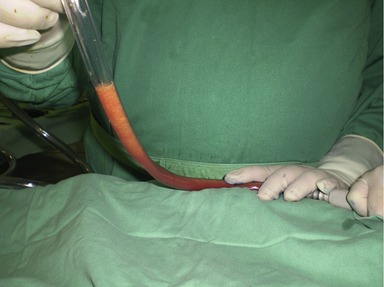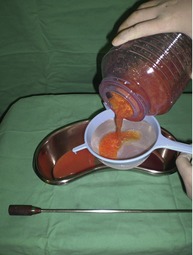CHAPTER 61 New concepts in fat grafting
Technical steps
Method for obtaining fat
We then proceed with the liposuction, using cannulas of 3 to 6 mm caliber. The obtained fat is aspirated with a pressure around 370 mmHg, with the intention of protecting the fat cell. Studies have shown that higher pressures can damage the fat cell (Fig. 61.1).
1. Fat gathered with no special preparation.
2. Saline solution added to the fat and then sieved.
3. Fat that passed through the sieve (Fig. 61.2).
4. Fat retained in the sieve, injected with a 40 × 12 mm needle.
Stay updated, free articles. Join our Telegram channel

Full access? Get Clinical Tree










